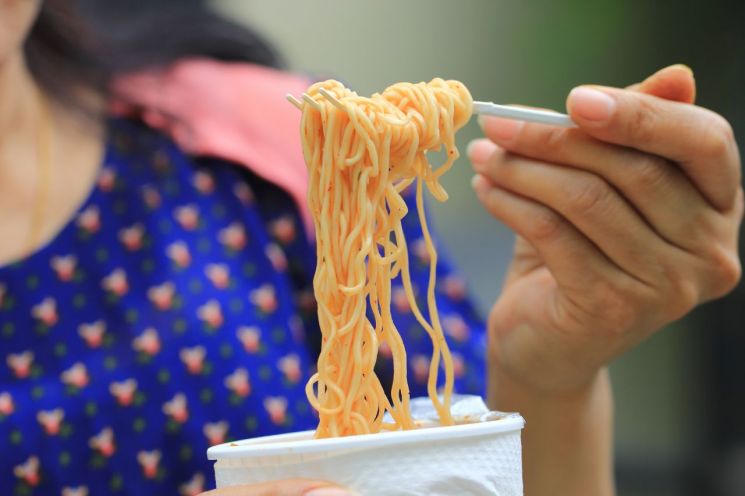5.4 billion ramen consumption in 2019
57 per person… Second after Korea
70% of the market of 3 native companies
Korea ranked 10th with Paldo Ramyun

Photo = Getty Image Bank
[아시아경제 하노이 조아라 객원기자] Vietnam’s ramen consumption is increasing rapidly. Recently, according to the World Instant Ramen Association (WINA) and KOTRA, Vietnam’s ramen consumption amounted to 5.4 billion in 2019, up 4.4% from the same period last year. It ranks fifth in the world after China (4.450 billion units), Indonesia (12.5 billion units), India (6.73 billion units), and Japan (5.63 billion units).

During the same period, the consumption of ramen per person in Vietnam was 57. It is the highest level after Korea (75), which consumes the most ramen per person in the world. From 2015 to 2019, the average annual growth rate of the ramen market in Vietnam is 3.1%, recording a steady increase.
Vietnam’s ramen consumption is estimated to have increased last year. According to the market research firm Canta World Panel, the amount of ramen consumption in urban areas increased by 65% and by 27% in rural areas due to the novel coronavirus infection (Corona 19) in early 2020. KOTRA analyzed that “The growth of the Vietnamese ramen market reflects the tendency of consumers to choose simple products that fit their work and life patterns.”
Along with the growth of the ramen market, companies entering the market are also rapidly increasing. It is analyzed that there are 50 instant noodle manufacturers in Vietnam. Among them, Vina Acecook, Masan and Asia Food occupy 70% of the market. Among Korean companies, Paldo Ramyun ranked 10th. Paldo Ramyun entered Vietnam in 2006 and completed a ramen factory in Phu Tho Province in the northern province in 2012, and started production and distribution in earnest, continuing its growth in Vietnam.
Meanwhile, in addition to Paldo, Korean food companies such as Orion and Daesang are doing well in Vietnam. Orion’s cumulative sales of its Vietnamese subsidiary exceeded 2.2 trillion won last year. Orion made its first step in Vietnam by exporting chocolate pies in 1995, and established a factory in Ho Chi Minh City in 2006. In 2009, a second factory was built in Hanoi. Choco Pie, which occupies nearly 70% of the market share in Vietnam, is a product loved by locals enough to rise to ceremonies.
Daesang aims to become a comprehensive food company by diversifying production items from Miwon to complex seasonings for soup, fried powder, chili sauce, and soy sauce. After completing the acquisition of Deuk Viet Foods, a local fresh sausage processing company in September 2016, it is also targeting the refrigerated and frozen market by entering the meat processing market.
Joara, Hanoi Guest Reporter [email protected]
